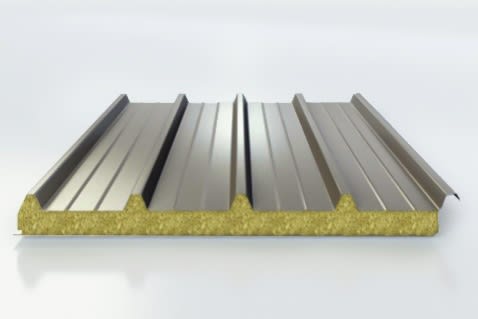Can you give example of a one hour fire rating roof?
For bare I-beam w8x21 and C-purlin 2x6" 1.8mm without any fire retardant or fire cover carrying lightweight metal roof. How long before the I-beam would bend and the C-purlin and thin metal roof melt if they were exposed directly to fire?
Any photos of bent I-beam, melted C-purlins and thin metal roof?

